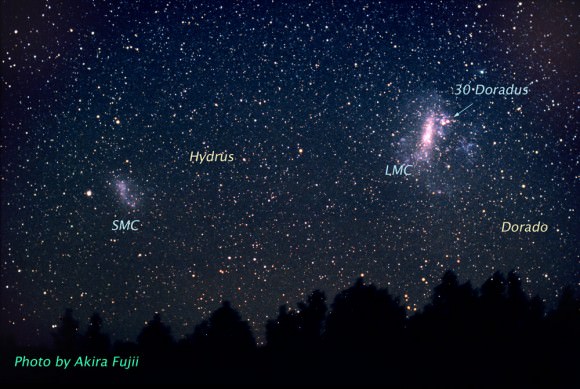A brand new Hubble image from Wide Field Camera 3 shows the most detailed view of the largest stellar nursery in our local galactic neighborhood. The massive, young stellar grouping, called R136, is only a few million years old and resides in the 30 Doradus Nebula, a turbulent star-birth region in the Large Magellanic Cloud (LMC), a satellite galaxy of our Milky Way. There is no known star-forming region in our galaxy as large or as prolific as 30 Doradus. Many of the diamond-like icy blue stars are among the most massive stars known. Several of them are over 100 times more massive than our Sun. In a few million years, this region should provide an incredible show: that’s when these hefty stars are destined to pop off like a string of firecrackers, as supernovas.
The image, taken in ultraviolet, visible, and red light by Hubble’s Wide Field Camera 3, spans about 100 light-years. The nebula is close enough to Earth that Hubble can resolve individual stars, giving astronomers important information about the birth and evolution of stars in the universe. The Hubble observations were taken Oct. 20-27, 2009. The blue color is light from the hottest, most massive stars; the green from the glow of oxygen; and the red from fluorescing hydrogen.

The LMC is located 170,000 light-years away and is a member of the Local Group of Galaxies, which also includes the Milky Way.
Click here for larger (and eye-popping!) versions of this image.
You can also “zoom” in and out of this image here on the “Starry Critters” website.
Source: HubbleSite


Awesome image!!! About 30 years ago I was reading articles that R136 may be a SUPERSTAR of 3000 stellar mass!!!! (this was giving many astronomers and physicists
nightmares at that time because they stated no known stable star can have a mass more than 100-150 that of the Sun.) Later on, with improved devices and methods, R136 was found to be made of very many massive stars, now this!!!The imaging devices and knowledge of our Universe over the last 25 years has increased incredibly!!
Star-grazer west coast, you’re reading my mind. The true nature of R 136a (the brightest unresolved source in R 136) was in dispute until speckle interferometry laid the matter to rest in 1985. The wiki page for R 136 links to papers concerning R 136a: http://en.wikipedia.org/wiki/R136. How far we have come!
Jon Hanford , thank you for the link- this got me to many links I didn’t realize was published about awesome R 136a!!!